There are four main voice types (voice categories) within classical music and beyond, these are the soprano voice, alto voice, tenor voice and bass voice. There are others that you may have heard of such as the mezzo soprano, baritone and even the coloratura soprano.
In this post we will take deep dive into the soprano voice, a classical female singing voice.
Types of Soprano voice
Soprano voices are the highest human range, because of this they are most commonly female voices. However, there are certain instances where a male voice will be able to sing in the soprano range. When we see the term soprano we know that the singer will sing high.
The term soprano comes from the Italian word ‘sopra’ meaning above. Sopranos fall into five generally recognized subcategories the coloratura soprano, soubrette soprano, lyric soprano, spinto soprano and dramatic soprano. Each of these different categories has slightly different characteristics.
Coloratura soprano
The coloratura soprano is a voice type that sings right at the top of the human range. The coloratura soprano is characterised by agile runs, leaps and trills and has a huge amount of flexibility in the incredibly high range. The coloratura sopranos range is from middle C to high F. This voice type will often sing the main parts in operatic music!

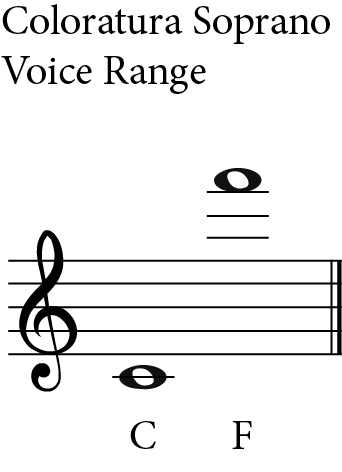
Soubrette Soprano
A soubrette soprano has a light and sweet timbre to the voice and its tessitura is in the mid range. The soubrette soprano vocal range is usually from middle C to high D. The vocal weight of the soubrette soprano is much lighter than other sopranos. ‘Papageno’ is a famous soubrette soprano.


Lyric soprano
Lyric sopranos have a warm quality with a full timbre that can be heard over the orchestra. The lyric soprano has a higher tessitura than the soubrette soprano and will usually play an ingenues character in an opera. You may sometimes see the lyric soprano divided into two groups light or full.
‘Contessa’ from Marriage of Figaro is a famous lyric soprano role
Spinto soprano
A spinto soprano has the same clarity as a lyric soprano but it can be pushed more to achieve dramatic climaxes without straining the voice. This voice will have a slightly darker tone than the lyric soprano. The vocal range of a spinto soprano is from middle C to D6.
‘Desdomona’ from Otello by Verdi is a famous spinto soprano role

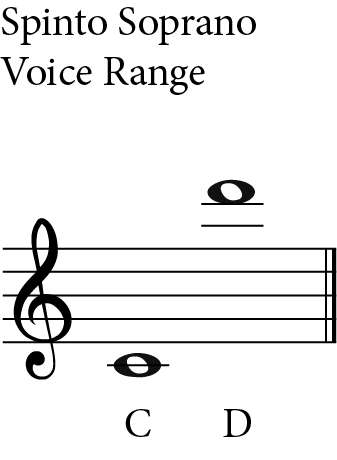
Dramatic coloratura soprano
A dramatic coloratura soprano has a very powerful and rich timbre that can cut through a full orchestra. A dramatic soprano usually has less agility than other soprano voice types but can produce a stronger sustained and fuller sound. The tessitura of this voice type is lower. The range of a dramatic soprano is usually from the A below middle C to high C (C6).
An example of famous dramatic coloratura soprano is Abigaille from ‘Nabucco’ by Verdi.

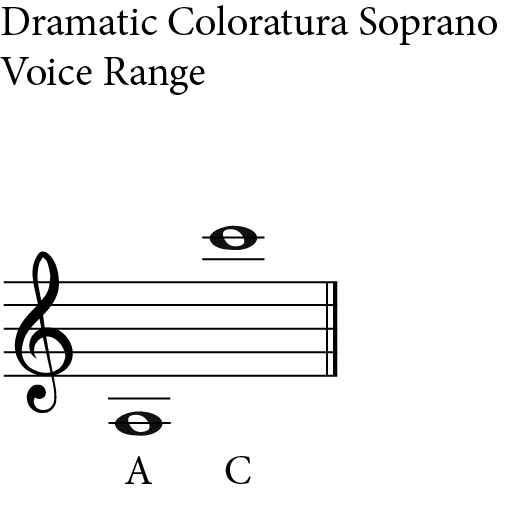
Some dramatic sopranos are known as wagnerian sopranos. These sopranos have an exceptionally big voice and have a much denser tone that is extremely powerful!
Sopranos will most commonly sing the melody with the other voice types singing the harmony, particularly in choral music.
Other types of Soprano
As we saw above, most sopranos are sung by women. However, there are instances where you may see a soprano part sung by a male voice.
The term sopranist is applied to male singers that can sing in the soprano vocal range.
You may also see the term ‘treble’ and this refers to a boy soprano. A treble is usually a young boy who has not yet hit puberty and therefore is able to reach the high notes of a soprano voice.
What is the Difference Between Treble and Soprano?
A treble voice is on with a high frequency tone most typically of a boy. Soprano refers to a high voice or high pitch of a female. Treble is a tone whose range or frequency is at the higher end of human hearing. It is the highest section of notes. A soprano is the voice of a female that is the highest vocal range of all voice types.
In the 16th, 17th and 18th century there was also another voice type called the ‘castrato’. This term refers to a castrated male.
Vocal range of typical soprano voices
The soprano has the highest tessitura of all the voice types. The soprano and the mezzo soprano voice do have similar ranges but it is the tessitura that differentiates them.
The low extreme of a soprano will be A or Bb just below middle C. However, in operatic music, the lowest note for a soprano will be an F. You can hear this in Strauss’s Die Frau Ohne Schatten.
The high end of a soprano will be a soprano C which is two octaves above middle C. However, you may see many standard repertoire pieces that also call for a C# or D above this. The very extreme of the soprano’s range is up around F6! Sopranos using the ‘whistle register‘ to achieve this.
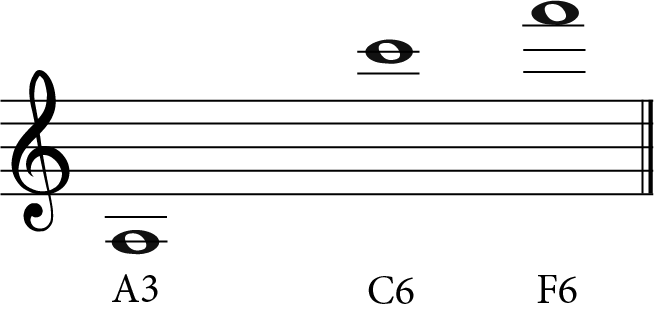
mezzo-soprano range
Mezzo sopranos are the voice type a bit lower than the soprano. The typical range of this voice type is the A just below middle C to the A just above the stave, it is a similar range but with a slightly lower register. To learn more about this voice type check out our article on the mezzo soprano voice.
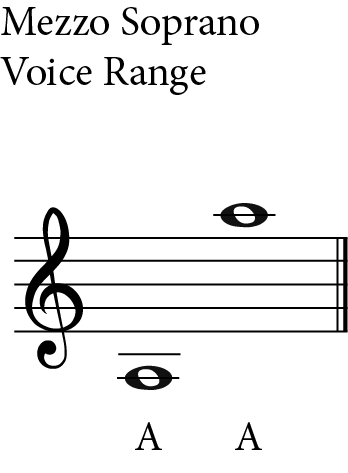
Music written for the soprano range
Music written for the soprano voice is usually notated in the treble clef since it’s in the higher range. Composers use this to their advantage, creating melodies that let the soprano’s voice shine with agility and delicate nuances.
From sweet angelic tunes to powerful operatic roles, music for soprano covers a wide range of emotions and shows off the incredible versatility of this voice type. Below is a list of different types of music that all have pieces written for the soprano voice.
Various genres of music feature written music for the soprano voice, including:
- Opera: Soprano roles are prominent in operatic compositions, with genres like opera seria, opera buffa, and grand opera showcasing the soprano’s versatility and dramatic capabilities.
- Art Songs: Composers often write art songs, also known as lieder, specifically for the soprano voice.
- Oratorio: Soprano solos are frequently found in oratorio compositions, which are large-scale religious works that combine chorus, orchestra, and vocal soloists. Sopranos often perform roles representing angels, virtuous characters, or the soprano solo part in sacred choral works.
- Choral Music: Sopranos play a vital role in choral music, both as soloists and as part of vocal ensembles. They bring a bright and soaring quality to the harmony, often taking melodic lines that showcase their agility and range.
- Musical Theatre: Many musical theatre productions feature soprano roles, offering opportunities for sopranos to shine.
- Sacred Music: Sopranos play a significant role in sacred music, performing as soloists in masses, cantatas, and other religious compositions.
- Contemporary and Popular Music: Sopranos can be found in various contemporary and popular music genres, including pop, rock, jazz, and folk. They bring their unique vocal color and range to these genres, adding a touch of sweetness or power to the music.
How do I Know if I’m a soprano?
In order to determine if you are a soprano you need to take two things into consideration, your range and your tessitura. Remember your tessitura is the range you feel most comfortable in and where you produce the most beautiful sound (best timbre), not just where you can just about get the note out!
Further to this you can then take into account your passaggio, this literally means how you move between the different registers. chest voice to mix or mix to head voice
What’s next…?
- Learn about the other voice types.
